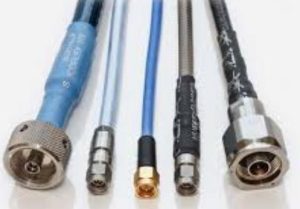What Is the Purpose of Waveguide Cable?
Waveguide cables are specialized conduits designed for transmitting microwave and radio frequency (RF) energy with minimal loss. Unlike standard coaxial cables, waveguide cables are structured to handle higher frequency ranges efficiently, making them essential in various high-demand applications in telecommunications, radar systems, and broadcasting.

Efficient Transmission of High-Frequency Signals
The primary purpose of a waveguide cable is to efficiently transmit electromagnetic waves at microwave frequencies. The unique design of waveguide cables allows them to carry signals at frequencies typically ranging from 1 GHz to 300 GHz, a capability that ordinary cables cannot match. This high-frequency handling is crucial in applications such as satellite communications and radar operations where signal integrity at high frequencies is paramount.
Minimized Signal Loss
One of the critical advantages of using waveguide cables is their ability to minimize signal loss. Signal attenuation in waveguide cables is significantly lower compared to traditional coaxial cables, especially at higher frequencies. For instance, a typical waveguide cable might exhibit attenuation as low as 0.1 dB per meter at 10 GHz, which is substantially less than what is experienced with other transmission mediums. This low attenuation ensures that signals maintain their strength over longer distances, making waveguide cables ideal for applications requiring reliable, long-range communication.
High Power Handling
Waveguide cables excel in high power applications. Their structure allows them to handle power levels that would typically cause arcing or overheating in standard coaxial cables. This feature is particularly important in military and aerospace applications, where the ability to transmit high-power pulses without degradation or loss is critical. The robustness of waveguide cables ensures that they can support the rigorous demands of these applications without failure.
Flexibility and Customization
Despite their rigid appearance, waveguide cables offer a degree of flexibility that is essential for practical installation. They can be bent and shaped to fit into complex installations, which is a valuable feature when deploying systems in constrained spaces. Additionally, waveguide cables can be customized in terms of diameter, shape, and the type of material used, allowing them to be tailored to specific requirements of different systems, whether it be for moisture resistance, temperature tolerance, or bending radius.
Applications Across Industries
The use of waveguide cable spans a variety of industries. In telecommunications, they are used to connect antennas to transmission equipment, ensuring that signals are transmitted with minimal loss. In meteorology, waveguide cables connect radar transmitters to antennas, playing a crucial role in weather monitoring and forecasting. Additionally, in the aerospace sector, they are used to ensure reliable communication and data transmission between spacecraft components and ground stations.
In conclusion, waveguide cables are indispensable in modern technology infrastructure, where high frequency, high power, and low loss transmission are required. Their design and capabilities make them the preferred choice for applications where performance and reliability are critical. By ensuring efficient and reliable transmission of electromagnetic waves, waveguide cables play a pivotal role in the functioning of advanced communication, radar, and broadcasting systems.